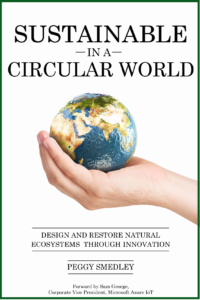The concrete industry is responsible for 8% of the global CO2 emissions. Why is it so important that we look to reduce those CO2 emissions? This was the exact question I asked Tapio Vehmas, CEO, Carbonaide, when we sat down for a candid conversation about climate change and the environment.
“We need to do something with concrete. There are no real alternatives for concrete. Globally, we use 10 billion cubic meters of concrete every year,” says Vehmas. “We have to deal with concrete and make it less carbon intensive.”
Perhaps we need to first encourage our structural engineers to design structures that emit fewer of the gases during the actual building of these structures, throughout their use, and finally their end of use. In fact, an ASCE (American Society of Civil Engineers) report suggests building construction and use contributes to more than 40% of human-caused emissions of GHG (greenhouses gases). And while we can’t eliminate all GHGs, just yet, as I see it, reducing some gases from concrete is a pretty big first step.
Carbon Curing
The solution comes in the form of carbon curing, which is a process of taking the CO2 and returning it as a mineral in the concrete, he says. The company’s technology uses and stores carbon dioxide in the precast concrete industry.
The carbon curing technology enables the production of carbon-negative concrete. In combination with low carbon footprint binders, mineralized CO2 turns concrete carbon footprint into negative. With Carbonaide technology, a precast plant may become a carbon sink.
On a recent episode of The Peggy Smedley Show, he details the entire process, saying if you want to make carbon negative concrete you need some kind of precast concrete manufacturing line, then you need to combine Carbonaide technology into that precast construction line.
“I hope our technology accelerates the transformation into the casting from the precast side,” he explains. “We know already the precast is taking more and more market from the ready-mix castings. Our technology hopefully accelerates that process.”
Precast and Work of the Future
As many in construction already know, precast concrete is often produced in a controlled, off-site environment. It is then transported to the construction jobsite and can be put in place. This can include everything from precast beams to wall panels for tilt up construction.
Naturally, I began to wonder if this may also become a solution to the worker shortage and would enable the worker of the future to be more empowered on the jobsite. Vehmas quite simply said this is happening very often already—at least in Finland and other progressive countries.
The result will be concrete that is more environmentally friendly—and work that is more efficient. Is the concrete on your construction jobsite contributing to a healthier environment—or constraining the already resource-intensive world we live in? Perhaps it is a question to consider for future construction projects.
Want to tweet about this article? Use hashtags #construction #IoT #sustainability #AI #5G #cloud #edge #futureofwork #infrastructure


